
William Butterfield was a Gothic Revival architect and associated with the Oxford Movement. He is noted for his use of polychromy.

Sir George Gilbert Scott, known as Sir Gilbert Scott, was a prolific English Gothic revival architect, chiefly associated with the design, building and renovation of churches and cathedrals, although he started his career as a leading designer of workhouses. Over 800 buildings were designed or altered by him.
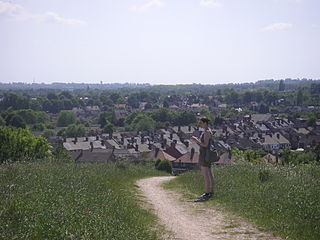
Hucknall, formerly Hucknall Torkard, is a market town in the Ashfield district of Nottinghamshire, England. It lies 7 miles north of Nottingham, 7 miles south-east of Kirkby-in-Ashfield, 9 miles from Mansfield and 10 miles south of Sutton-in-Ashfield. It is the second largest town in the Ashfield district after Sutton-in-Ashfield.
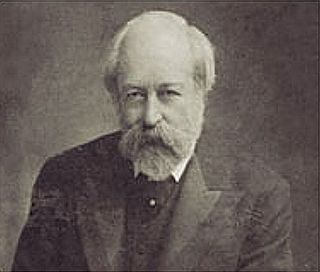
George Frederick Bodley was an English Gothic Revival architect. He was a pupil of Sir George Gilbert Scott, and worked in partnership with Thomas Garner for much of his career. He was one of the founders of Watts & Co.
John Oldrid Scott was a British architect.

Sir Arthur William Blomfield was an English architect. He became president of the Architectural Association in 1861; a Fellow of the Royal Institute of British Architects in 1867 and vice-president of the RIBA in 1886. He was educated at Trinity College, Cambridge, where he read Architecture.

Sir Edward Guy Dawber, RA was an English architect working in the late Arts and Crafts style, whose work is particularly associated with the Cotswolds.
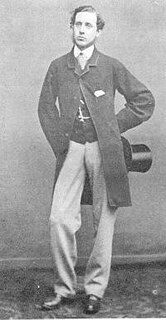
Charles Eamer Kempe was a Victorian designer and manufacturer of stained glass. His studios produced over 4,000 windows and also designs for altars and altar frontals, furniture and furnishings, lichgates and memorials that helped to define a later nineteenth-century Anglican style. The list of English cathedrals containing examples of his work includes: Chester, Gloucester, Hereford, Lichfield, Wells, Winchester and York. Kempe's networks of patrons and influence stretched from the Royal Family and the Church of England hierarchy to the literary and artistic beau monde.

William Henry Bidlake MA, FRIBA was an English architect, a leading figure of the Arts and Crafts movement in Birmingham and Director of the School of Architecture at Birmingham School of Art from 1919 until 1924.
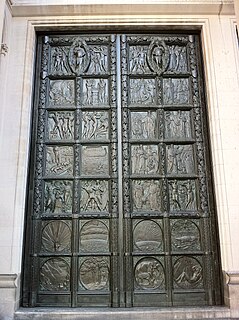
Henry Wilson was a British architect, jeweller and designer.

John Everett Tourtellotte was a prominent western American architect, best known for his projects in Idaho. His work in Boise included the Idaho State Capitol, the Boise City National Bank, the Carnegie Library, and numerous other buildings for schools, universities, churches, and government institutions. From 1922 to 1930, he worked in Portland, Oregon.
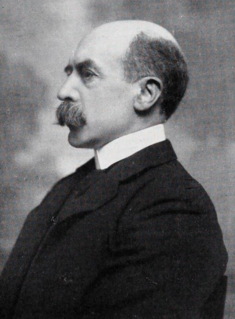
Edward William Mountford was an English architect, noted for his Edwardian Baroque style, who designed a number of town halls – Sheffield, Battersea and Lancaster – as well as the Old Bailey in London. He served as President of the Architectural Association, and as a council-member of the Royal Institute of British Architects, but died young at the age of 52, "removing from the front rank of the profession a very able and distinguished architect".

The Dean of Lichfield is the head and chair of the chapter of canons, the ruling body of Lichfield Cathedral. The dean and chapter are based at the Cathedral Church of the Blessed Virgin Mary and St Chad in Lichfield. The cathedral is the mother church of the Diocese of Lichfield and seat of the Bishop of Lichfield. The current dean is Adrian Dorber.
William Jeffrey Hopkins (1820–1901) was a British architect.
Frederick Preedy was an architect and glass painter in England.

Cecil Greenwood Hare was an architect and designer based in England.
Edward Goldie (1856–1921) was an English ecclesiastical architect who was notable for building Roman Catholic churches mainly in the form of Gothic Revival architecture. He was the son of George Goldie.

Abraham Harrison Goodall LRIBA was a British architect based in Nottingham.

Louis Ambler FSA FRIBA was an English architect.
John Samuel Alder FRIBA was a British architect known for his church buildings.















